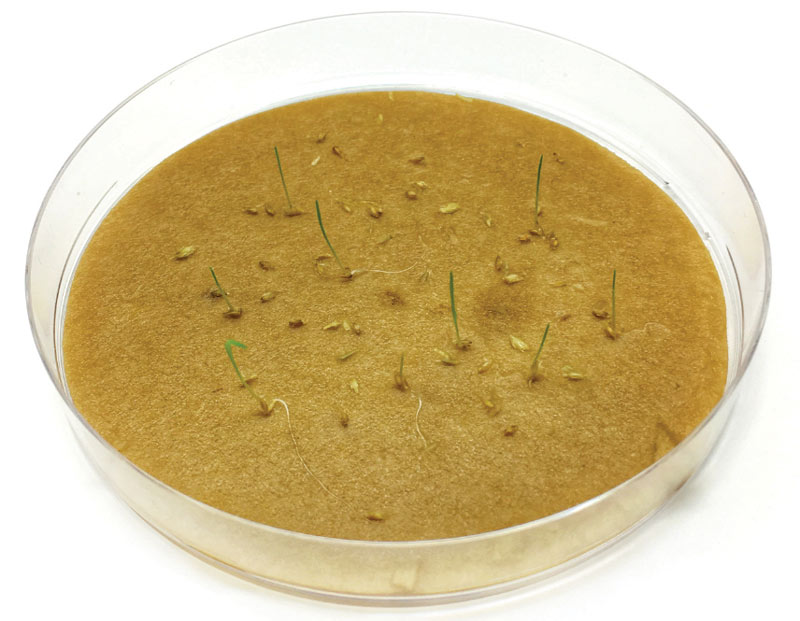
Photo by Devon Carroll
Soil seed bank management is a means of combating herbicide resistance in weeds. Minimizing deposition of germinable annual bluegrass (Poa annua L.) seed into the soil via clipping collection could be a non-chemical means of reducing annual bluegrass populations in turfgrass.
Our objective was to assess the germinability of annual bluegrass seed in spring to determine when clipping collection could be most impactful.
Research was conducted at the University of Tennessee-Knoxville, the University of Georgia, Mississippi State University and Purdue University. Annual bluegrass seed was harvested from 1-square-meter plots at each location. Unique growing degree day (GDD0C; base 0 C with accumulation totaled from Jan. 1, 2019) benchmarks were assigned to each plot. Seed was collected every 100 GDD0C from 400 to 1,100 GDD0C. Harvested seed was dried, screened and stored at -18 C for at least seven days.
Four 50-seed aliquots from each plot were placed in a growth chamber set to 25 C/20 C on an 8-/16-hour light/dark cycle. Germination was assessed every three days from days 6 to 21 after incubation. Seed was removed after germination. Two experimental runs were conducted at each location during 2019.
In Tennessee, growing degree day significantly affected germination from nine to 21 days after seeding. Results indicate annual bluegrass seeds are most germinable from 700 to 900 GDD0C in spring. Clipping collections at these timings may reduce annual bluegrass populations over time. Studies will be repeated in 2020 to confirm that these GDD0C benchmarks are repeatable over time.
— Devon Carroll and J.T. Brosnan, Ph.D., University of Tennessee-Knoxville; P.E. McCullough, Ph.D., University of Georgia; J.D. McCurdy, Ph.D., and E. Batis De Castro, Mississippi State University; A.J. Patton, Ph.D., and Wenwen Liu, Ph.D., Purdue University
Editor’s note: An earlier version of this summary was published in the 2019 ASA-CSSA-SSSA Meeting Abstracts, ASA-CSSA-SSSA, Madison, Wis.
Teresa Carson is GCM’s science editor.